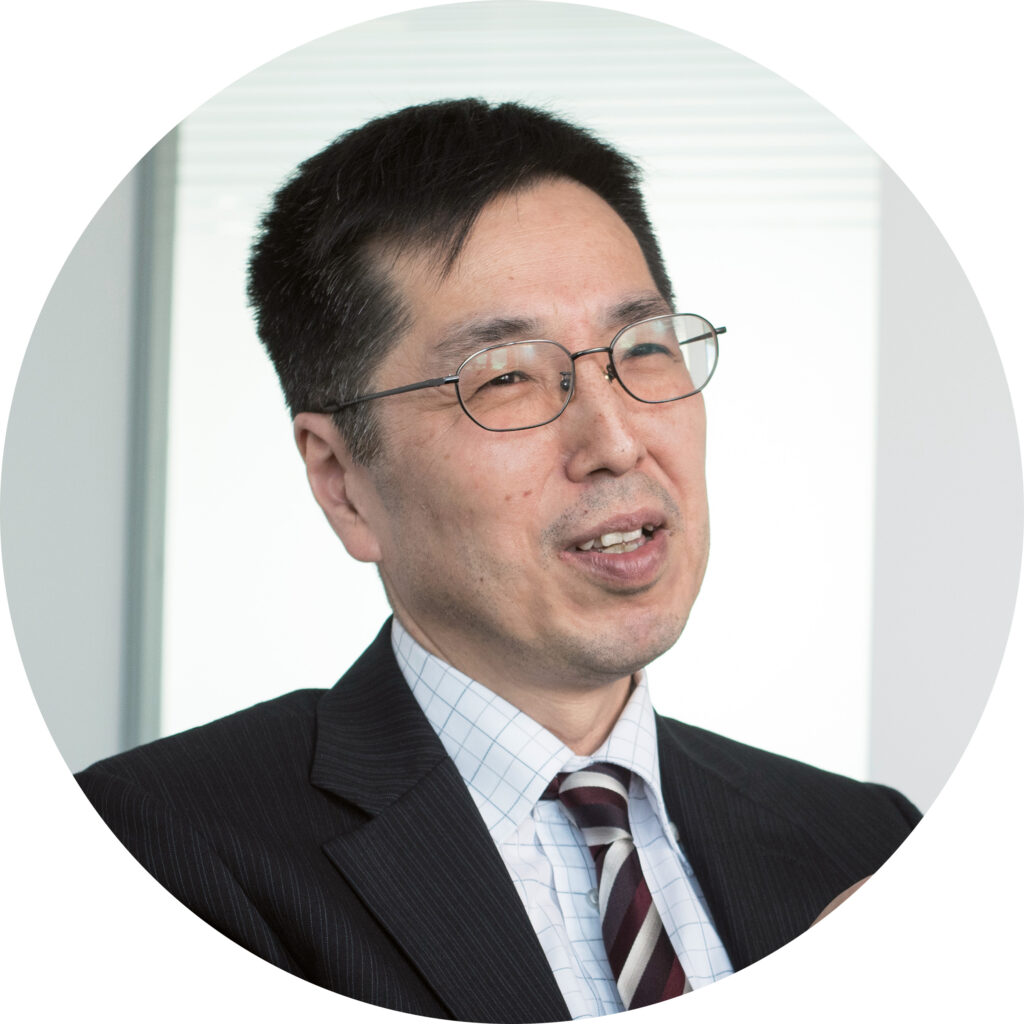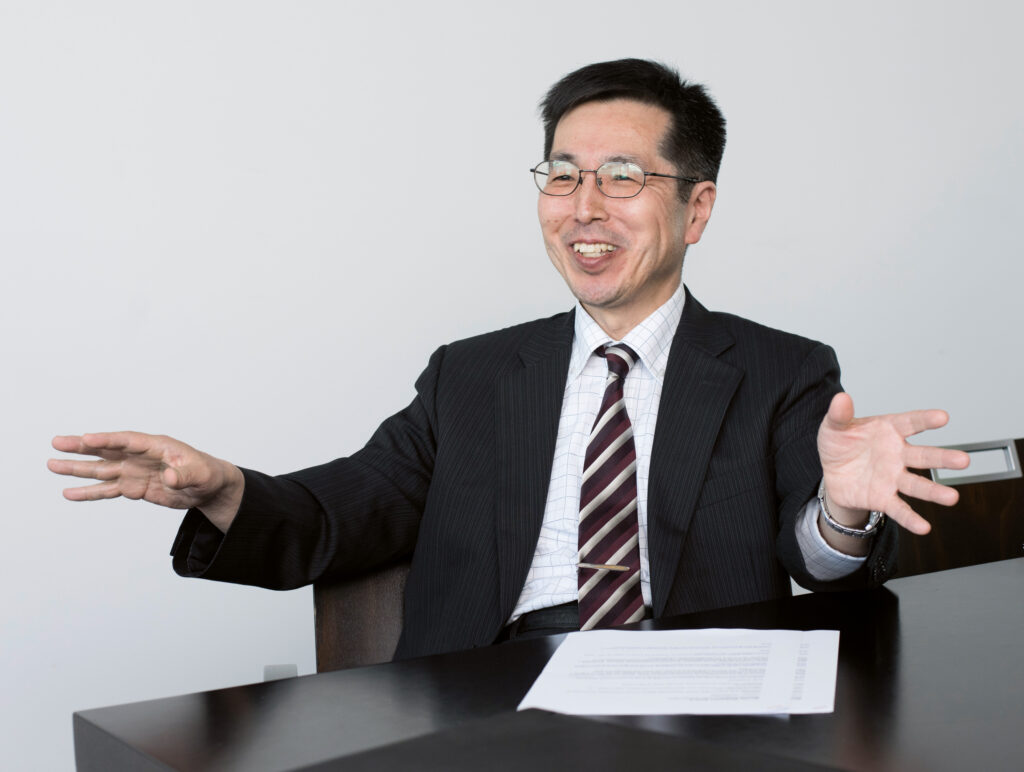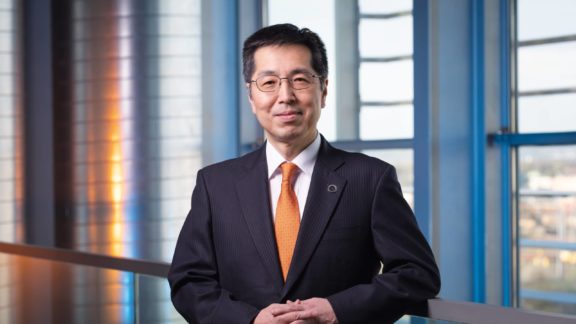This post is also available in: 简体中文 (Chinese (Simplified))
Primetals Technologies is characterized by a broad technological, geographical and cultural diversity that serves as a catalyst for the generation of new ideas and solution approaches. In this interview with Metals Magazine editor Dr. Lawrence Gould, CTO Dr. Etsuro Hirai underlines the advantage that the extensive company background offers for technological evolution. He also emphasizes the role that proper knowledge management and people management play in driving technology forward.

What do you see as the main technological benefit resulting from the merger of MHMM [Mitsubishi-Hitachi Metals Machinery] and Siemens VAI to form Primetals Technologies?
Etsuro Hirai: We are aiming to be a perfect and comprehensive supplier of metals technologies with manufacturing expertise. The former MHMM was primarily involved in downstream rolling and processing activities. In fact, it had always been our intention to expand to become a full-line supplier company, which was strongly supported by our CEO, Yasukuni Yamasaki. This led to the joint venture and the birth of Primetals Technologies.
What goals or what strategy do you have for integrating and advancing the level of technological competence offered by Primetals Technologies?
Etsuro Hirai: A unifying strategy is now necessary and the technology must be balanced. We have to identify the key technologies that can best serve the metals business. The direction that we take must be based on customer requirements and the general trends in steelmaking. A key challenge will be to maximize the synergy effect of the two joint-venture companies. The technologies of both companies can directly complement one another right now. On top of this, the technologies of both parent companies can be applied. For example, Mitsubishi Heavy Industries offers chemical plants and power stations with downstream DeNOx and CO₂-reduction solutions, so the same technology can be made available for upstream processes. The E.U. has set very high targets regarding CO₂ emissions – an 80% reduction compared to 1990 levels – so a strong focus will be placed on CO₂-reduction solutions and the development of the related technologies. There will be an increased integration of technology, electrics and automation in downstream processes. The emphasis will be placed on using electrical energy more efficiently and lowering energy consumption, especially through the application of IT solutions, such as in Industry 4.0 concepts. In the areas of rolling and processing, MHMM and Siemens VAI do have a few overlapping products, although this is not necessarily negative. In fact, the evolution of technology is accelerated by the availability of a wide range of technologies – and this variety is now in a single hand. The goal will therefore be to combine technologies and define their future direction. In some cases certain technologies will become obsolete and others will complement one another.
The engineering and R&D competence of Primetals Technologies is based in different locations through–out the world. Do you see this as an advantage or disadvantage?
Etsuro Hirai: In a similar way that a variety of technologies leads to technical evolution, a variety of locations with their different cultures and environments can also have a positive impact on the evolution of technology. It’s helpful to have different R&D groups concentrated at different locations, but the issue is to properly manage and direct this R&D competence. Primetals Technologies currently has some 300 R&D specialists working at ten locations throughout the world. People need to discuss and share ideas. A common Internet platform now serves as an important means for communicating between our Linz, Erlangen and Japanese sites. Everyone who has access can view the profile and status of projects and share information using the installed tools. Toward the end of the current fiscal year, a common communication tool will be available for all of our R&D centers worldwide.
What is the role of knowledge management at Primetals Technologies?
Etsuro Hirai: This is a key issue. With so much data available today, my view is that knowledge lives in people, so if you want to manage technology, you need to manage people. To do this, you have to know which technology belongs to whom, what its level is, the degree of know-how and where it is based. Another key issue is the vast metallurgical know-how that is available at Primetals Technologies, which significantly distinguishes us from the competition. As new steel grades develop faster than ever before, proper knowledge management and people management are vital.
Primetals Technologies has signed an agreement to participate in K1-Met [Competence Center for Metallurgy] to improve existing metallurgical processes and to develop the technologies of tomorrow. What benefits do you see in such industrial and scientific partnerships?
Etsuro Hirai: A scientific partnership is very important for our company because good ideas also come from outside sources. Again, it is this variety of people, companies and organizations that can result in a wellspring of solution approaches that a single company may not think of on its own.
We are aiming to be a perfect and comprehensive supplier of metals technologies with manufacturing expertise.”
What potential do you see for the strip-casting technology offered by Primetals Technologies?
Etsuro Hirai: If a customer wants to minimize financial expenditures yet needs to cast a specific steel grade at a certain production capacity, strip casting offers an attractive option. This technology is not just limited to steelmaking but can also be applied in a wide range of other metal- producing sectors. We have the experience to build and install strip-casting plants. We are aiming to be a supplier that offers a variety of casting technologies for customers.
As far as breakthrough technologies go, do you see any ahead in the iron and steel industry?
Etsuro Hirai: It is said that iron and steelmaking technology is very mature today and that the fundamental chemical and metallurgical reactions are well known. It is therefore quite difficult to identify radical new approaches or implement groundbreaking developments. But there are still some areas where exciting things are happening, such as in connection with continuous production. The casting and rolling processes have been linked as highlighted by the Arvedi ESP process for the endless production of hot-rolled coils directly from liquid steel. Such technologies are increasingly being combined with IT solutions to correspond to real-time production and market needs. Steelmaking processes will one day be seamlessly connected to the upstream and downstream steps. Due to steelmaking overcapacity, there will be an increasing abundance of scrap, which calls for more advanced melting furnaces and improved refining processes.
One last question: The company slogan of Primetals Technologies is “Creating the future of metals as one.” What do you understand under this phrase?
Etsuro Hirai: “As one” is a key word in Japanese society. We say “一心同体 (isshin-doutai).” It means that one spirit lives in one body, which is to say that everybody has the same objective and vision and that we all are in the same boat. There may be different approaches and different ways of doing things, but the overall objective for us is to be a full-line supplier in our field so that we can offer the best-possible solutions to meet the needs of our customers. We respect free thinking, but the overall target has to be the same. We also have to think about the procedure and necessary steps to create the future. This can be achieved on the basis of excellent metallurgical processes and machinery, which can contribute to positive developments in the steelmaking business and to society as a whole. Above all, technological developments must be customer focused and provide added value. This means that we need to closely work together not only with our own employees but also with our customers to create the future of metals as one.
Dr. Etsuro Hirai joined Mitsubishi Heavy Industries (MHI) in 1983 and first worked in the company’s R&D center in Hiroshima in connection with steelmaking machinery and chemical engineering technology. With his background in heat transfer and fluid dynamics, he was heavily involved in numerous furnace and pickling line projects. This eventually expanded to include R&D activities in the areas of casting and rolling, lubrication and solidification.
A technological highlight was his participation in the development of a jet-pickling process, which evolved to the iBox system that allows for more efficient and faster pickling – especially with interstitial-free steels. Another technological feat was the implementation of a non-contact air-floating system for steel in the galvanizing furnace and for silicon steel in the annealing furnace.
In January 2015, at the founding of Primetals Technologies, Dr. Etsuro Hirai was appointed Chief Technology Officer (CTO).


